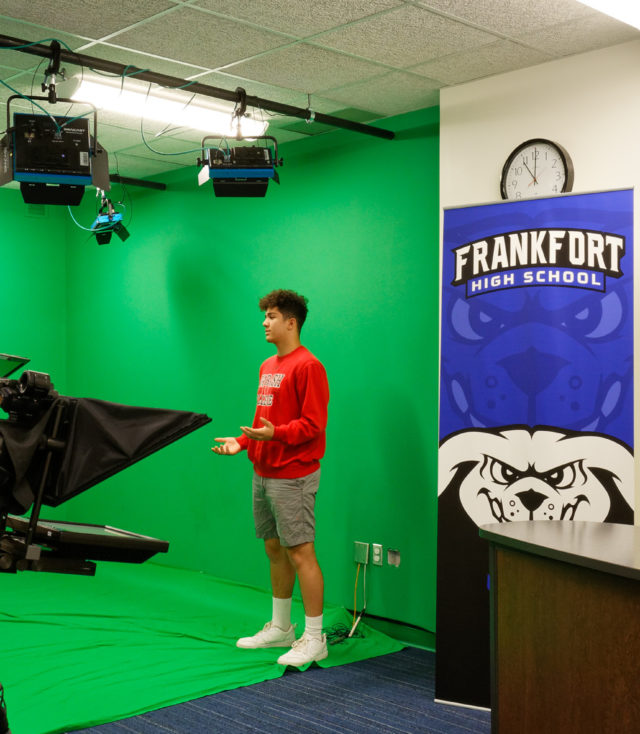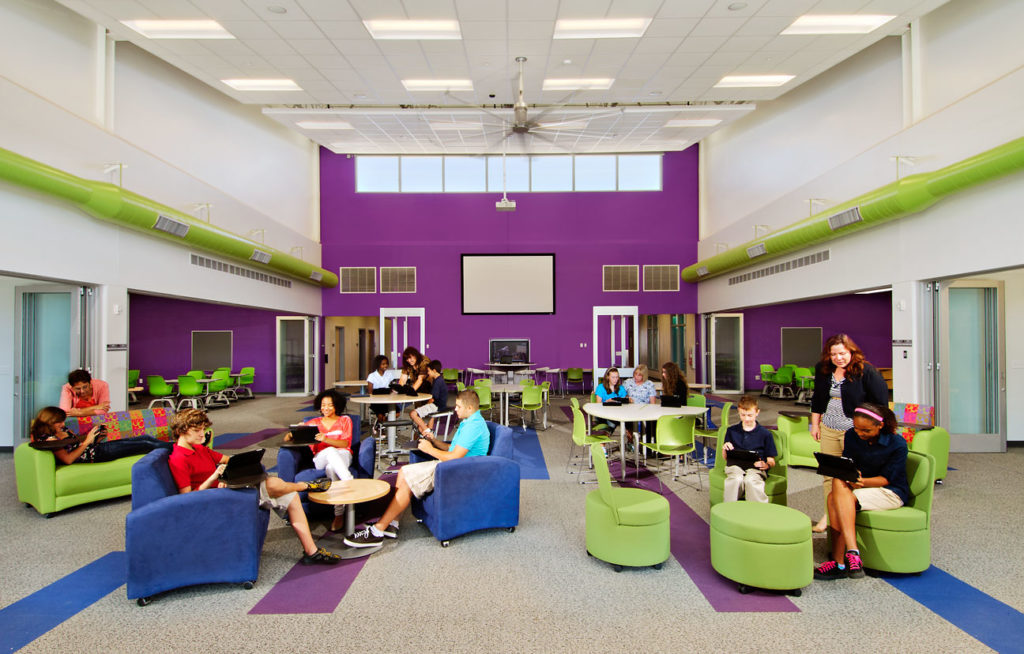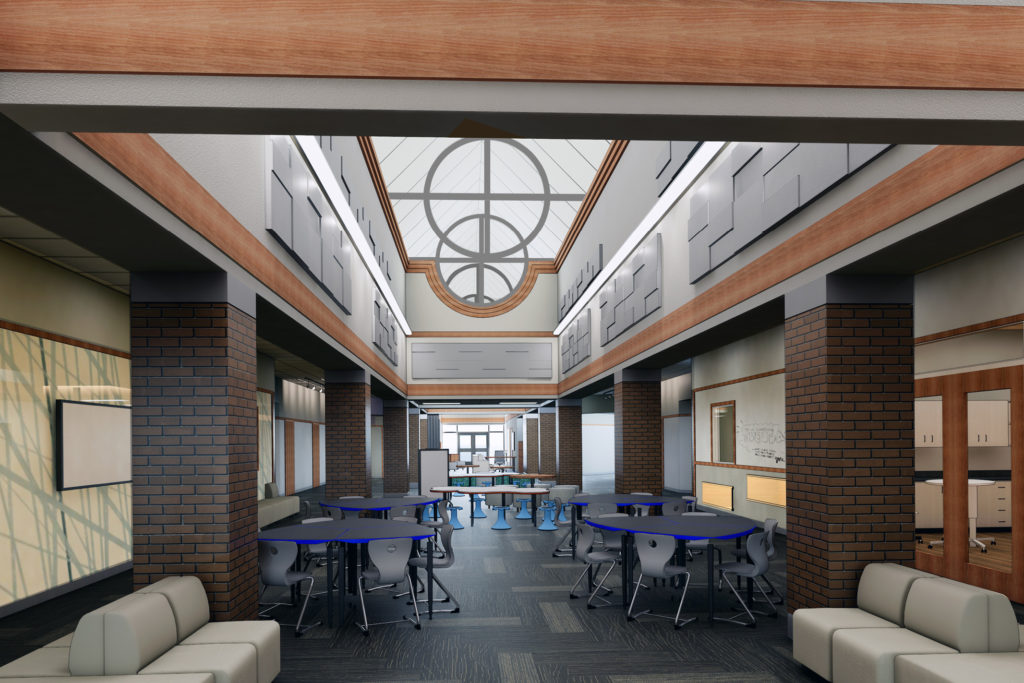Insights
Renovating Schools for Student-Centered Learning
By
The term “student-centered learning” has become a buzzword in the educational community. It can manifest in a variety of activities and capacities, but simply put, it refers to shifting the focus of education from the teacher to the student. While the idea seems obvious (shouldn’t education always be focused on the student?) its applications affect both the design of the learning environment and the role of the teacher within. By renovating traditional spaces to support student-centered learning, schools can increase student engagement and teacher efficacy.
Understanding student-centered learning
In a traditional learning environment, the teacher single-handedly decides what students will learn and how they will learn it. But a student-centered learning environment empowers students to be active participants in their education by giving them input on what they will learn and how. Student interests are explored in creative and engaging ways, which typically include small group collaboration and integrated technology. Using this approach, teachers serve to guide students through activities, rather than lecture them at the front of the room.

The benefits of student-centered learning
As we understand more about the process in which people learn, it is clear there is no universal approach to education. Students learn in different ways, but one thing holds true for all learners: they learn most effectively when they enjoy it.
By involving students in determining the focus of their learning, a student-centered approach makes them feel valued and ensures they are interested in, and excited by, the content they are studying. Giving learning relevance to students will lead to increased engagement and achievement, and encourage students to grow into lifelong learners. By helping students explore their interests, a student-centered learning approach can even point them to a future career.
Student-centered learning environments
Implementing student-centered learning in a traditional classroom space can be a challenge. After all, a fundamentally different approach to education requires a fundamentally different learning environment to support it. To be effective, student-centered learning requires an active, flexible environment designed to support any range of activities and learning objectives. So what does a student-centered learning environment look like?
The arrangement can change day to day, or even hour to hour, depending on the type of space and the activities at hand. Where in traditional classrooms stood rows of desks facing the teacher at the “front” of the room, student-centered classrooms are made up of mobile furniture, and may not have a “front” at all. Students are arranged based on their needs for each activity—some may be collaborating with a partner, some may be learning in groups and others may be working independently on a laptop. The teacher moves around the room guiding students and keeping them on task.
Other flexible environments may include extended learning areas outside of classrooms, or a large, centralized learning commons where students can gather for a variety of projects and activities. These more general spaces are juxtaposed by specialized learning environments, such as makerspaces or a broadcast studio, to support specific student interests within the school. In order to support a wide range of interests, a student-centered school should feature a diversity of spaces.
Renovating schools for student-centered learning
Older buildings with traditional learning environments typically don’t have the diversity of spaces that is required of student-centered learning, so renovations must create it. At New Britton Elementary School in Fishers, Ind., renovations are reconfiguring existing traditional space to create new environments for student-centered learning.
The school’s existing wings were double-loaded corridors with 950 SF classrooms on each side. By capturing 50 to 70 SF from each classroom, our team was able to create three different types of space: enclosed small group rooms, open collaboration hubs and huddle spaces. The former corridor space now serves as a central learning commons complete with marker surfaces and magnetic display zones.

Each school’s student body and learning community is different, so each school can require different spaces to fit their needs. At Frankfort High School in Frankfort, Ind., students expressed interest in multimedia opportunities, and though the school had developed an effective program, it was hidden in a back corner of the building and limited by available technology. Renovations to the school created a brand new broadcast studio in one of the most prominent places in the building, designed with extensive interior glazing to increase visibility. The new broadcast studio is equipped with industry-standard technology, editing software and a green room for students to develop future-ready skills in multimedia.
Excitement at Frankfort is now at an all-time high. The broadcast studio’s accessibility and prominence have made it a centerpiece of the high school, and the program has expanded the scope of its work and projects. Radio and television classes are now involved in school events, including award nights, open houses, musicals, sports, concerts and graduation. The new computers, equipment, cameras and lights in the studio have increased opportunities for students and are effectively preparing them for college and real-world television/radio work.

Student-centered learning is necessary to making students feel valued and invested in their education. Because each educational community is different, architects must work with administrators, teachers and students during planning and design to determine the best way to support learning objectives at their school, and make the most of existing space. By renovating traditional, outdated spaces to support student-centered learning, schools can have a profound impact on student engagement.
Designing School-Based Health Centers
By Dan ObrynbaSchool-based health centers are becoming integral components of public schools, primarily serving the needs of students and staff, with the potential to also serve the broader community. School-Based Health Centers are usually run by separate
Full ArticleEsports Facilities for Student Engagement
By Steven HerrAs competitive esports becomes a viable career path, educators across the country are embracing these gaming trends and expanding esports programming at their schools. Schools that have adopted esports are already seeing the benefits. According
Full ArticleSmart Schools Roundtable: School Safety by Design
By Zachary SprungerThe tragedy at Robb Elementary School in Uvalde, Texas, has once again brought the issue of school security into the national conversation. In 2020, Fanning Howey hosted a school security webinar featuring Michael Dorn, Executive
Full Article